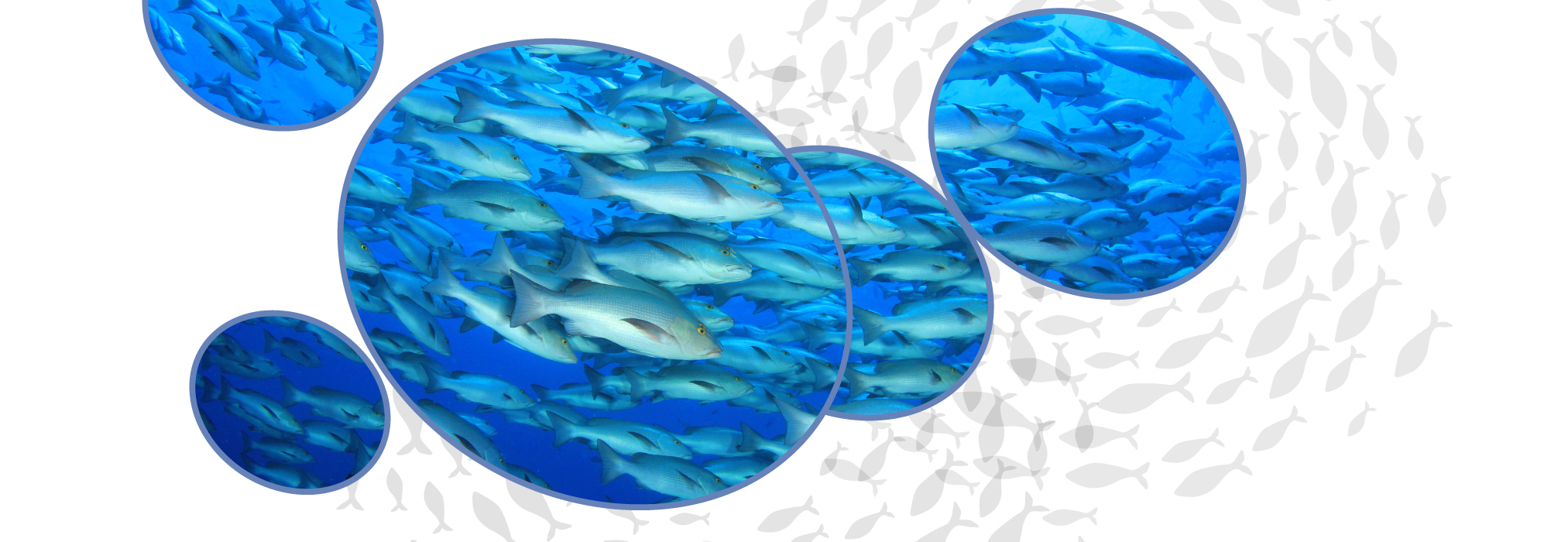Farming Finfish
By John Tibbetts
Growing Hatcheries Through Cost-effective and Profitable Aquaculture
Advanced technologies and training could help more saltwater finfish farmers prosper in warm-water regions. Now FAU researchers are partnering with the U.S. Department of Agriculture’s Agricultural Research Service to develop new strains of Florida pompano and redfish for more cost-efficient and profitable aquaculture, allowing the industry to grow.
“This holistic $2.4 million project supports stakeholder groups in breaking down barriers to develop the warm-water aquaculture industry,” said Paul Wills, Ph.D., project director, research professor and associate director for research at FAU’s Harbor Branch Oceanographic Institute (HBOI).
HBOI scientists will conduct research and provide technical guidance and training to help private individuals enter or expand finfish hatchery businesses. Florida pompano and redfish were chosen as the two initial candidate species for the project based on stakeholder input, and other candidates will follow.
A commercial fish hatchery depends on healthy broodstock: male and female fish carefully selected as parents based on size, health and other characteristics. In the hatchery, males and females spawn. Their larvae, or fry, are cultivated in controlled environments requiring high-quality fish feeds and other conditions for improved survival, growth and health. In the industry, these juveniles are later used as seedstock to grow them out for harvest, either for other producers or used on the same farm.
It is expensive and technically difficult for producers to finance and establish their own hatcheries, for small hatcheries to expand operations, and for new startup hatcheries to break ground. The technical assistance this collaboration will provide will help ease this burden for industry.
“There are some small hatcheries for warm water marine fish, but they have limited production,” Wills said. “They can’t produce the volume of juveniles needed for the industry to expand. Because adequate seedstock is not available, potential producers don’t get into the business. And producers don’t start their own hatcheries because of lack of capital and markets for juveniles.” Scientists will conduct research to help improve a number of interrelated ingredients needed for successful hatchery operations and industry expansion.
Controlling disease is an important challenge for hatcheries and fish farms. “Our team includes a fish-health researcher and geneticists who will monitor for diseases using genetic techniques and also study potential genetic improvements in fish that could address disease,” he said.
Identifying the most efficient feed recipes is crucial in developing new aquaculture species. “A nutritionist will study how to improve fish feeds, interacting with geneticists and other scientists,” Wills said. “Selecting for certain genetic traits could improve productivity with increased growth rates and food conversion efficiency.”
Developing a new species for aquaculture depends on productive broodstock. “A reproductive developmental biologist aims to help improve the efficiency of broodstock rearing and breeding, developing high quality eggs and larvae,” Wills said. “When broodstock produce healthier seedstock, the juveniles can grow faster on smaller volumes of feed. As a result, more efficient seedstock producers can sell juveniles at a lower price. That means savings for producers who buy those juveniles as well. Total production costs become lower overall.” The overall increase in production is then good for seedstock producers by increasing demand for their juveniles.
If you would like more information, please contact us at dorcommunications@fau.edu.
